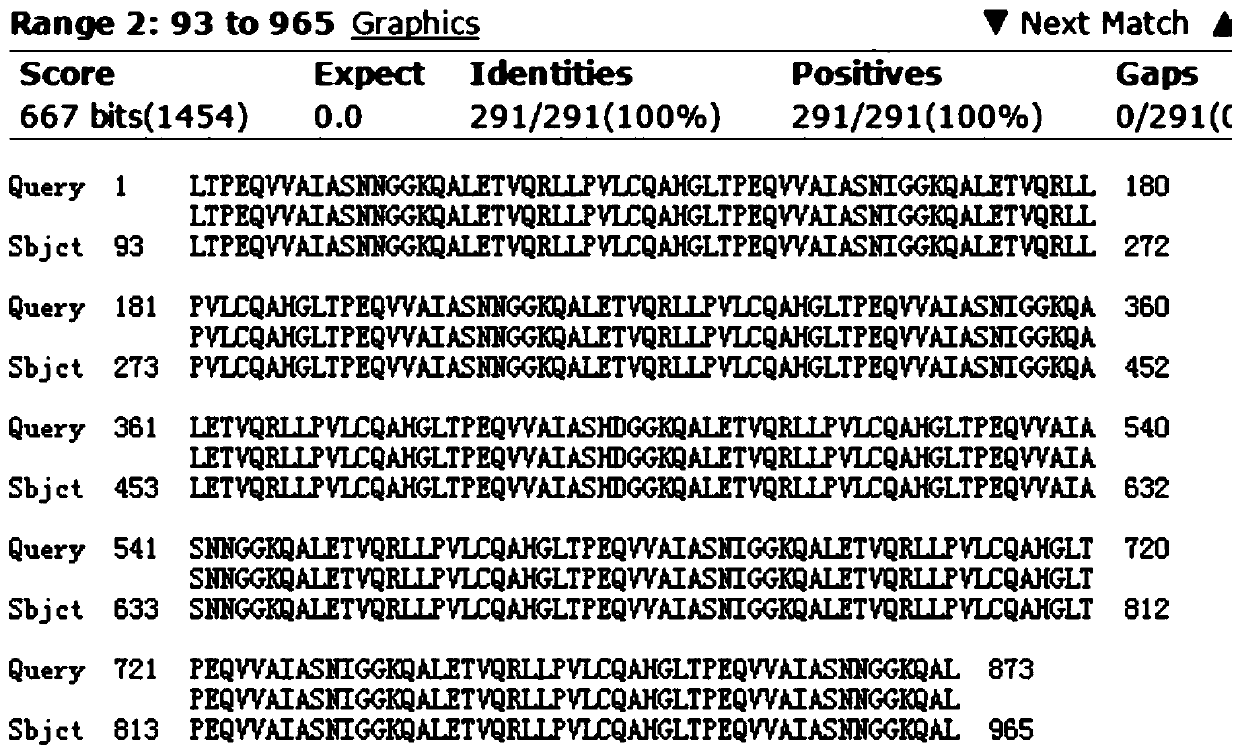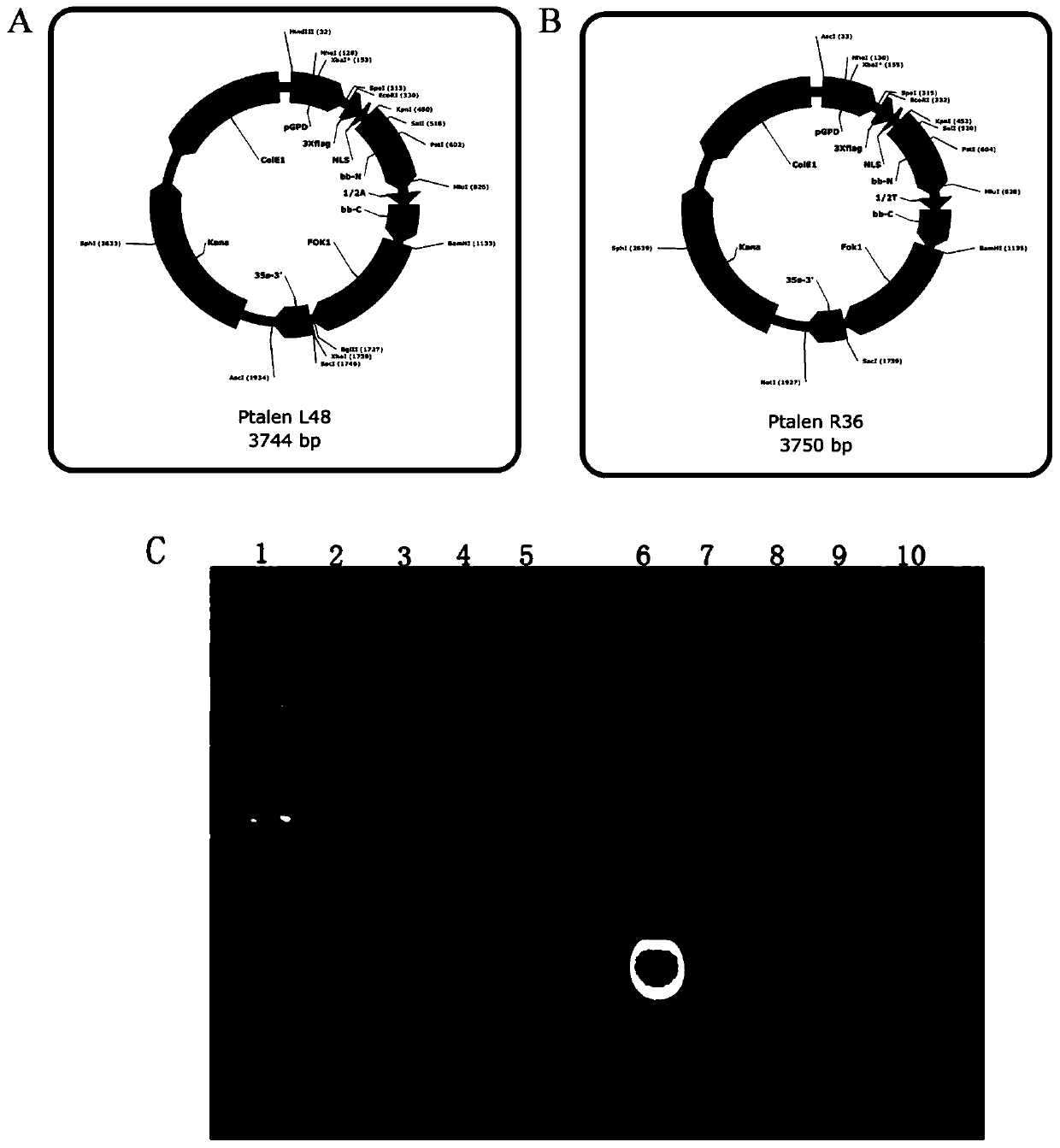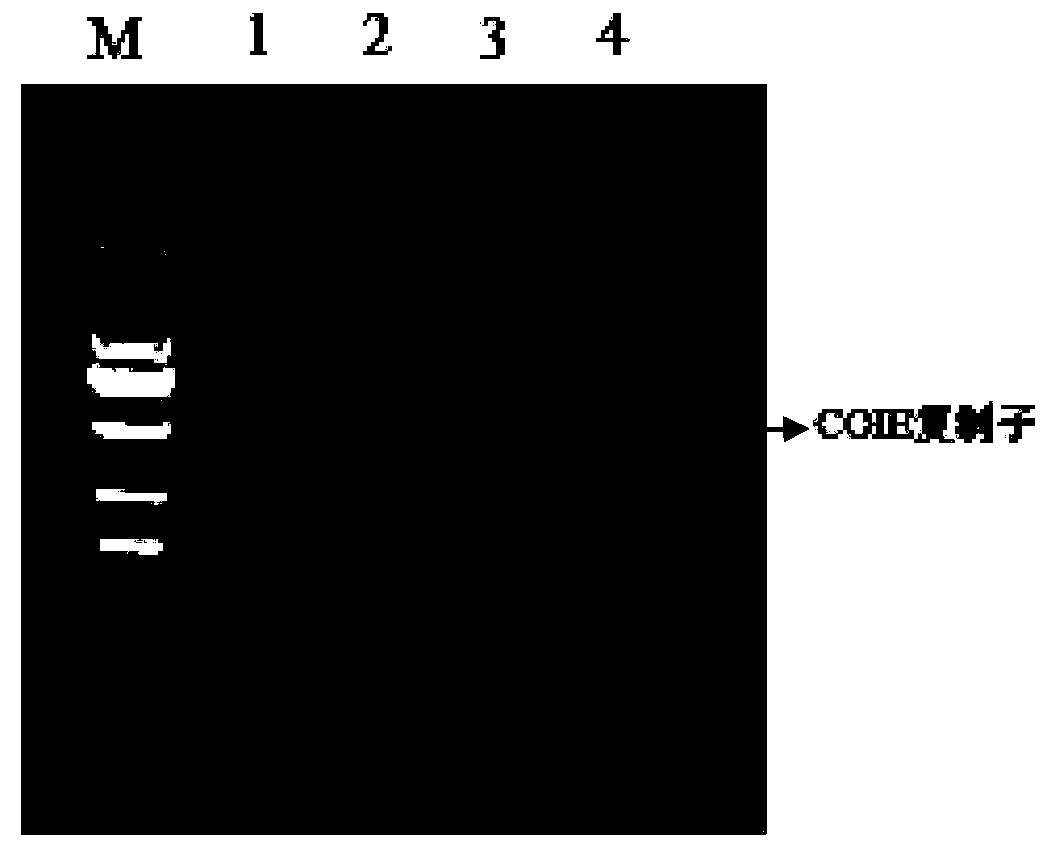Sorangium cellulosum highly producing epothilone D as well as construction method and application of sorangium cellulosum
A technology of S. cellulosus and epothilone, which is applied in the fields of biochemistry and molecular biology, can solve the problems of unseen production and less application of S. cellulosus epothilones, and achieve broad-spectrum and high-efficiency anti-tumor Activity, the effect of expanding the application
- Summary
- Abstract
- Description
- Claims
- Application Information
AI Technical Summary
Problems solved by technology
Method used
Image
Examples
Embodiment 1
[0021] Amplification of the epoK gene in S. cellulosus So ce M4 and construction of TALEN vector:
[0022] The primers were designed according to the known epoK gene of S. cellulosus, and the epoK gene of S. cellulosus So ce M4 was amplified. The left arm target sequence (5'-GAGACGAAGCCTGCTTT-3') and right arm target sequence (5'-CCTCCGCGTACCCAGGCG-3') of TALEN were selected from the amplified epoK gene as the target sequence. Using the Fast TALENassembly kit (Shanghai Stance Biological Engineering Co., Ltd., article number: 2801-005), TAL repeat units were designed according to the target base sequences of the left and right arms of the TALEN, and the TALE repeat units targeting the left arm and right arm of the epoK gene were respectively obtained. The TALE repeat unit targeting the left arm of the epoK gene was linked to the left arm vector PtalenL48 to obtain a recombinant TALEN-Ptalen L48 vector, and the TALE repeat unit targeting the right arm of the epoK gene was linked...
Embodiment 2
[0025] Introduction of recombinant TALEN vector and knockout of epoK gene in S. cellulosus So ce M4 strain:
[0026]The recombinant TALEN backbone vectors (epoK-TALEN-L48-P43 and epoK-TALEN-R36-P43) containing the target sequence of the left arm and the target sequence of the right arm were simultaneously introduced into the competent cells of S. cellulosus SoceM4 by electroporation In , the G52 plate containing kanamycin was used for screening. The successful introduction of the recombinant TALEN vector into S. cellulosus Soce M4 was verified by amplifying the ColE1 replicon. Using the expanded cultured bacterial solution as a template, the nucleotide sequence (F: 5'-TGAGATCCTTTTTTTCTGCG-3', R: 5'-TTTCCATAGGCTCCGCCCCC-3') as shown in SEQ ID NO.1 and SEQ ID NO.2 is used as The primers were used for PCR amplification, and the PCR amplification of the bacteria solution successfully obtained the ColE1 replicon, which confirmed the introduction of the recombinant TALEN backbone v...
Embodiment 3
[0029] Analysis of epothilone production in wild So ce M4 and recombinant So ce M4 strains (△epoK So ce M4):
[0030] Ferment the wild So ce M4 and △epoK So ce M4 strains, add macroporous adsorption resin, and use methanol to elute the product on the macroporous adsorption resin. The obtained products were loaded on HPLC-MS respectively, and the yields of epothilones B and epothilones D in the products were compared and analyzed. The results showed that the yield of epothilone D in the wild So ce M4 strain was 4.35±0.16mg / L, and the yield of epothilone D in the △epoK So ce M4 strain was 5.82±0.25mg / L. And the output of epothilone B in wild So ce M4 bacterial strain is 7.64 ± 1.18mg / L, the output of epothilone B in △ epoK So ce M4 bacterial strain is 5.06 ± 0.16mg / L ( Figure 5 ). The above results show that knocking out the epoK gene in the Socemus cellulosum So ce M4 strain using TALEN technology can significantly increase the production of epothilone D, while reducing the ...
PUM
 Login to View More
Login to View More Abstract
Description
Claims
Application Information
 Login to View More
Login to View More - R&D
- Intellectual Property
- Life Sciences
- Materials
- Tech Scout
- Unparalleled Data Quality
- Higher Quality Content
- 60% Fewer Hallucinations
Browse by: Latest US Patents, China's latest patents, Technical Efficacy Thesaurus, Application Domain, Technology Topic, Popular Technical Reports.
© 2025 PatSnap. All rights reserved.Legal|Privacy policy|Modern Slavery Act Transparency Statement|Sitemap|About US| Contact US: help@patsnap.com



